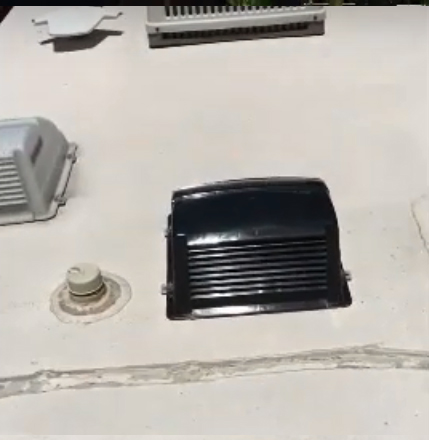So you’ve got an RV and you’re pretty darn sure it has a rubber roof. It’s what the guy you bought it from said, and it sure seemed like he knew what he was talking about. However, you’re a bit of a greenhorn when it comes to RV jargon, so it was almost as if he was speaking in another language.
Sure, you’ve done a bit of research, and you’re doing more now; but it’s likely that you’re going to need some help when it comes to learning about the ins and outs of your RV rubber roof.
Making Sure That Roof Is Rubber
The first step is to make sure your RV roof really is made of rubber. The easy way to do this is to consult your RV’s manual. The manual will tell you that you either have an EPDM RV roof (Ethylene Propylene Diene Monomer) or a TPO roof (Thermal Poly Olefin). After seeing what EPDM and TPO stand for, it sure makes you thank the heavens for acronyms.
If you’ve lost or never received your RV owner’s manual, it’s no worry. You can typically tell the difference between an EPDM and TPO RV roof with a simple eye and touch test.
A TPO roof typically looks shinier than an EPDM roof and feels like a swimming pool liner. Also, a TPO roof comes with heat-welded seams. As for an EPDM roof, it looks and feels exactly like the material of a black inner tube and is cemented together instead of heat-welded.
TPO roofs are available in a variety of colors, although they usually come in white, while EPDM roofs are typically only available in black or white but are far more commonly white because white reflects heat much better. The surface of EPDM roofs is more matte, while the surface of TPO roofs is shinier and slicker.
Essentially, if your RV rubber roof seems very rubbery, then it’s likely an EPDM roof. If it seems more like a plastic, then it’s likely a TPO roof.
One last trick, in case you’re still having trouble. The flashing boots on TPO roofs almost always have “TPO” stamped onto them.
Benefits of a Rubber RV Roof
One of the primary benefits of a rubber RV roof is its cost. Rubber roofs are much more cost-effective than other types of roofs like aluminum or fiberglass. Also, rubber roofs weigh less than fiberglass and aluminum roofs.
Perhaps most important of all: rubber roofs on RV’s are extremely low maintenance. Rubber roofs require very little if any care. Especially if it’s been coated with RV Roof Magic.
Rubber roofs also provide your RV with a long-lasting, durable material and are usually laid in a single piece. This means fewer seams in your roof. Fewer seams mean fewer places for water and other hazards to seep under the roof and damage your RV. Also, modern rubber is not damaged by the sun’s UV rays so it can last for up to 50 years or for even longer! With that said, many rubber roofed RV’s from the 70s still have their same rubber roofs. Because they’re so durable, rubber roofs are also able to withstand high winds and hail damage. Another distinct advantage of rubber roofs for RV’s is that they’re easy to seal and repair if they ever happen to become damaged. Repairs of rubber roofs tend to be fast, easy, and cheap. Typically, all that’s required to repair the rubber roof on your RV is a tube of liquid rubber. Also, special tape that’s specifically designed for rubber roofs can be used for some repairs.



I’m interested in buying the product for my camper
hi yes you can purchase it directly on our site we currently do not retail it in stores thank you